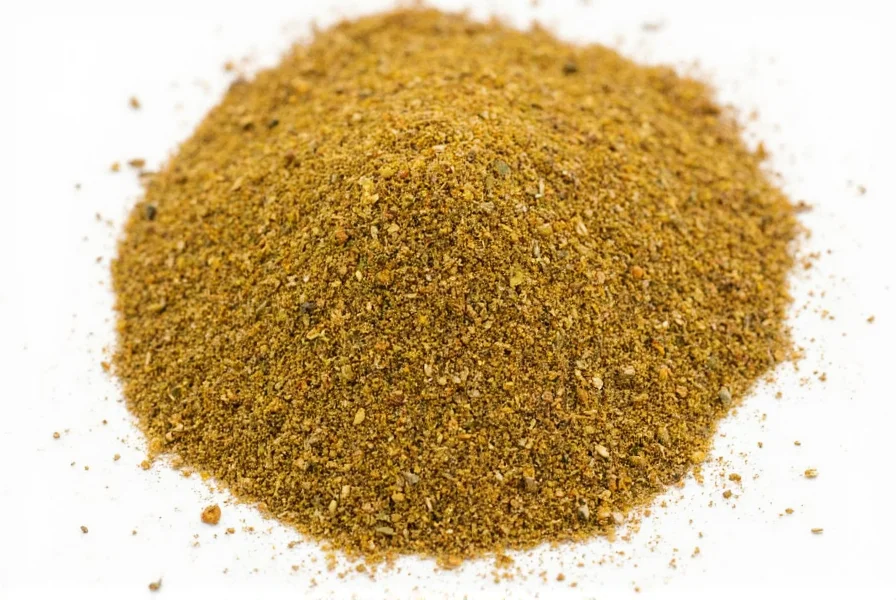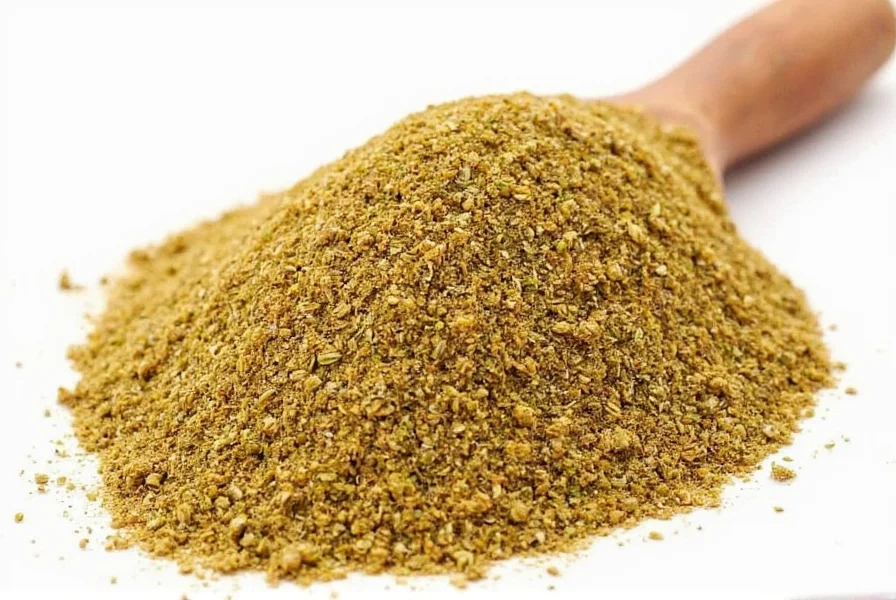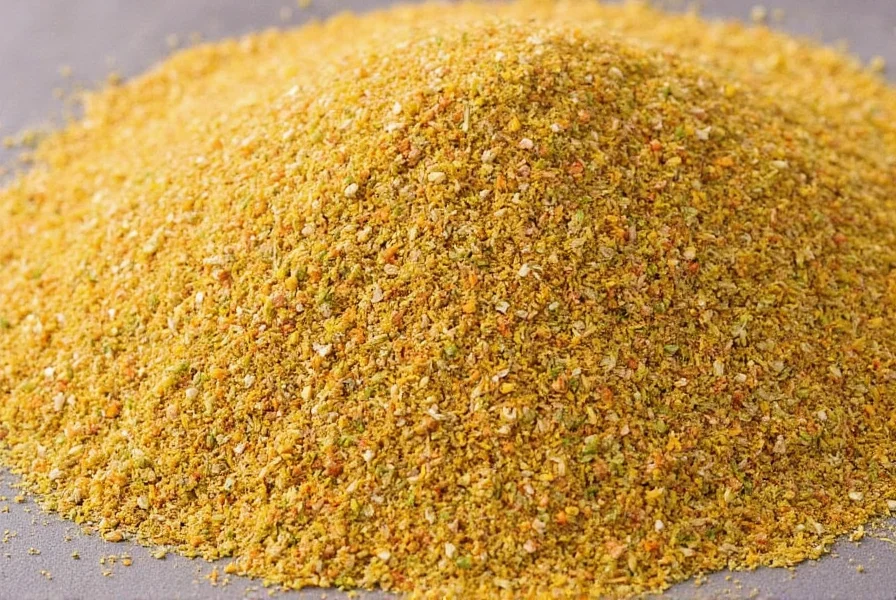Ground coriander represents one of the world's most widely used spices, transforming the dried seeds of the Coriandrum sativum plant into a convenient cooking ingredient. When coriander seeds mature and dry on the plant, they're harvested, cleaned, and finely ground to produce this aromatic powder. The grinding process releases essential oils that deliver distinctive flavor notes impossible to achieve with whole seeds alone.
Understanding Coriander: Seeds vs. Ground vs. Fresh
Many people confuse different forms of coriander. The coriander plant produces three distinct culinary products:
| Coriander Form | Source on Plant | Flavor Profile | Common Uses |
|---|---|---|---|
| Ground coriander | Dried seeds, ground | Warm, citrusy, slightly sweet | Curries, spice blends, baked goods |
| Coriander seeds (whole) | Dried seeds, intact | Milder, more floral | Pickling, slow-cooked dishes |
| Cilantro (fresh) | Leaves and stems | Bright, herbal, sometimes soapy | Garnishes, salsas, fresh sauces |
Understanding these differences proves essential when following recipes. While ground coriander and fresh cilantro come from the same plant, they're not interchangeable in most dishes. The seeds contain different flavor compounds than the leaves, creating entirely distinct culinary experiences.
Flavor Profile and Culinary Applications
Ground coriander delivers a complex flavor profile that combines:
- Citrus notes (reminiscent of orange peel)
- Warm, nutty undertones
- Subtle sweetness
- Earthy depth
Chefs worldwide rely on ground coriander for its ability to enhance other spices without overpowering them. In Indian cuisine, it forms the foundation of curry powders and garam masala. Middle Eastern cooks incorporate it into falafel mixtures and baharat spice blends. European bakers use it in traditional rye breads and pickling spice mixes.
When cooking with ground coriander, remember that its volatile oils begin dissipating immediately after grinding. For maximum flavor impact, add ground coriander during the middle stages of cooking rather than at the beginning (which risks flavor loss) or at the very end (which prevents proper flavor integration).

Storage Recommendations for Maximum Freshness
Proper storage significantly extends ground coriander's shelf life and preserves its flavor compounds. Unlike whole seeds which maintain potency for 3-4 years, ground coriander loses its aromatic qualities more quickly due to increased surface area exposure.
Follow these storage guidelines:
- Keep in an airtight container away from light and heat
- Store in a cool, dark cupboard (not above the stove)
- Grind seeds in small batches for immediate use when possible
- Replace ground coriander every 6-12 months for optimal flavor
For extended freshness, some serious home cooks store ground coriander in the freezer. While this preserves flavor longer, frequent temperature changes can introduce moisture that degrades quality. If freezing, divide into small portions to avoid repeated thawing and refreezing.
Nutritional Benefits and Health Considerations
Ground coriander offers more than just flavor enhancement. Research indicates potential health benefits associated with regular consumption:
- Rich in antioxidants that combat oxidative stress
- Contains dietary fiber supporting digestive health
- Provides essential minerals including iron and magnesium
- May help regulate blood sugar levels according to preliminary studies
While ground coriander alone won't transform your health, incorporating it as part of a varied spice regimen contributes to the cumulative health benefits associated with diverse plant compounds. Just one teaspoon contains approximately 6 calories, making it an excellent flavor booster for calorie-conscious cooking.
Common Substitutions When Ground Coriander Isn't Available
Ran out of ground coriander mid-recipe? Several alternatives can work in a pinch, though none perfectly replicate its unique flavor profile:
- Whole coriander seeds (toasted and freshly ground): Use 1.5 times the amount called for in ground form
- Cumin: Provides earthiness but lacks citrus notes (use half the amount)
- Fennel seed (ground): Offers similar sweetness with licorice notes
- Coriander-cumin blend: Combine equal parts for closer approximation
For authentic flavor in traditional recipes, nothing substitutes perfectly for ground coriander. When possible, purchase small quantities frequently to ensure maximum freshness rather than relying on substitutions.

Practical Tips for Cooking with Ground Coriander
Maximize ground coriander's potential in your kitchen with these professional techniques:
- Bloom in oil: Heat 1 teaspoon ground coriander in 1 tablespoon oil for 30 seconds before adding other ingredients to intensify flavors
- Combine with acid: Pair with lemon juice or vinegar to balance its earthiness
- Balance with heat: Complements chili peppers without overwhelming them
- Use in sweet applications: Surprisingly effective in apple pies and spice cakes
When developing recipes, start with 1/4 to 1/2 teaspoon ground coriander per serving and adjust to taste. Its flavor builds gradually during cooking, so resist the urge to overcompensate early in the process.
Frequently Asked Questions
Is ground coriander the same as cilantro?
No, ground coriander and cilantro come from different parts of the same plant. Ground coriander is made from the dried seeds, while cilantro refers to the fresh leaves and stems. They have completely different flavor profiles and are not interchangeable in recipes.
Can I substitute ground coriander for coriander seeds?
Yes, but with adjustments. Use 3/4 teaspoon ground coriander for every 1 teaspoon of whole coriander seeds called for in a recipe. Keep in mind that ground coriander delivers more immediate flavor while seeds release flavor slowly during cooking.
Why does my ground coriander taste bitter?
Bitterness usually indicates the spice is old or was exposed to excessive heat during cooking. Ground coriander loses its delicate citrus notes over time, leaving behind more bitter compounds. Always store in a cool, dark place and replace every 6-12 months for best results.
Is ground coriander safe for people with cilantro allergy?
Generally yes. Cilantro allergy typically affects the fresh leaves (which contain different compounds), not the seeds used for ground coriander. However, consult with an allergist if you have severe reactions, as individual sensitivities may vary.
What's the difference between coriander and Chinese parsley?
Coriander and Chinese parsley refer to the same plant (Coriandrum sativum). The terminology varies by region - "coriander" typically describes the seeds and the plant globally, while "cilantro" refers to the fresh leaves in American English. Chinese parsley is another name for the fresh herb form.











 浙公网安备
33010002000092号
浙公网安备
33010002000092号 浙B2-20120091-4
浙B2-20120091-4